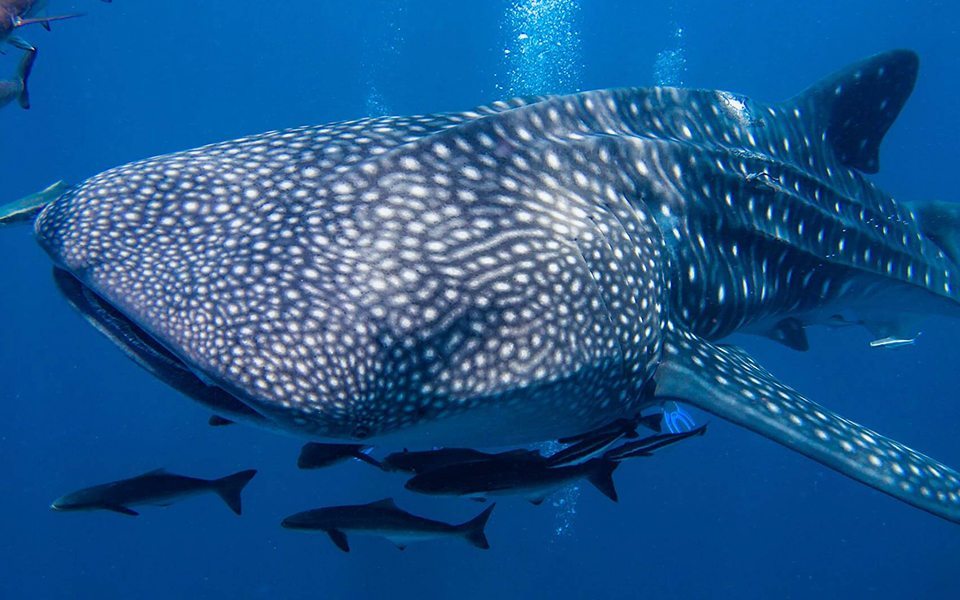The dive sites off Phuket's southern coast are excellent for day trips as they are a couple of hours away from Chalong Phuket. There, the waters are warm, averaging 28C, and have a marine environment rich in life of the Andaman Sea. They provide good diving for beginners, and is therefore an ideal location to do Open Water Courses as well as easy leisure diving.
Not everyone spells the Thai names of the islands the same way - Racha is often spelled Rajah and Raya. The Phi-Phi Islands are also spelled Pee-Pee. When reading about local dive-sites, it helps to learn a few Thai words: Ao means beach, Ko (or Koh) means Island, Hin means Rock, Yai means large, and Noi means small.
Racha Yai
Located off of Phuket’s east coast, the Racha Islands (Racha Yai and Racha Noi) provide excellent diving year round and are particularly suited for beginners. Sometimes called the Raya Islands, and featuring mild currents and shallow depths, these islands are perfect for those who’ve just finished their certification and are eager to explore the undersea world. The smaller of the islands, Racha Noi, also has some challenging dive sites for the experienced diver.
Racha Yai offers some of the best local year round dive-sites but the visibility varies according to the season. On the north end of the island are two beautiful little bays famous for their a deep clear water and colorful coral formations.
Racha Noi
The more isolated of the two islands and a popular dive-site for more experienced divers, the depths of Racha Noi are generally greater and the currents frequently stronger than at its sister island to the North. You will encounter huge underwater boulders that offer a good chance to see manta rays and whale sharks. The northern tip of the island offers an opportunity for a good multilevel dive along a large pinnacle where spotting larger marine life like Reef Sharks and Stingrays is common.
Off the southern point is a nice drift dive along some spectacular scenery as you find yourself on top of a large rock formation surrounded by deep water. On the southwest side there is a wooden ship-wreck that draws a lot of interesting reef fish.
Racha Noi offers many opportunities for an enjoyable and rewarding deep-dive but due to the potential for strong currents here, many of the dive shops will only bring divers who have an advanced certification.
Shark Point
So named for the large numbers of docile leopard sharks that can be found around its base, shark point is a lovely dive site that absolutely teems with life. Fairly strong currents sweep the site’s two pinnacles, providing ample food for the large populations of coral that cling to the rocks. Although visibility is sometimes impaired, on a clear day it is one of the most densely packed ecosystems in Phuket.
Koh Doc Mai
A tiny jungle topped island between Phuket and Phi Phi, Koh Doc Mai is considered one of the best wall dives in the area. The island is a huge limestone rock that rises steeply out of the sea and the walls go down to about 27m. The sheer walls are occupied with a different creature in every nook and cranny while the west side is a gently sloping hard coral reef. This dive is noted for its variety of reef fish and an opportunity to view some of the resident Moray Eels. The east-side of the island is a garden of yellow tube corals and with small caves along the base of the wall ready for exploration.
King Cruiser Wreck
The King Cruiser, a passenger ferry, sank on May 4th, 1997, apparently miles off course after striking the hazardous submerged pinnacle of Anemone reef while it was on it’s way to Koh Phi-Phi from Phuket. So far was the vessel off course, and so in need of a decent wreck diving site was Phuket, that local divers joked that the captain took a huge bribe to create a wreck for the divers. No one got hurt during the sinking and the King Cruiser lies on the sea bed 30m down. The top of the wreck is about 9-14m and the wreck attracts barracudas and whale sharks. Despite being a relatively shallow wreck, its location makes it unsuitable for beginners as the area often has strong currents and rough seas, so it is best for experienced recreational divers.
Anemone Reef
This unique dive-site is a large lime-stone pinnacle that rising from the seabed of about 30m up to just beneathe the surface. This barely submerged reef is a well-known shipping hazard and is located less than a mile North of Shark Point. The Thai’s know the site as “Hin Jom” or underwater rock. It is not as colorful as Shark Point but Anemone Reef is famed for its vast fields of sea anemones that cling to every surface available. The anemeones create the illusion that the rock is a living thing when they sway with the current as it passes.
The abundance of sea anemones and the nutrient-rich water attracts a constant stream of reef fish seeking food and shelter. Schools of parrotfish fish, snappers, groupers, and colorful clown fish live here while the larger fish like tuna, barracuda, and leopard sharks can be seen passing by on occasion. Anemone Reef is also revered for the viewing of lionfish, sometimes encountered in-groups of twelve or more.
Phi Phi Island
While technically located in Krabi waters, Phi Phi is easily reached from Phuket and its powder soft beaches and dramatic limestone cliffs make it a popular excursion for visitors to both provinces. The diving around Phi Phi is not as mind boggling as the Similans or Hin Daeng, but it does offer a huge variety of dive experiences concentrated within a small area. Longtail boats abound take you to sites filled with caves, swim-throughs and coral gardens. Mantas and whale sharks are sometimes spotted out at Bida Nok.



